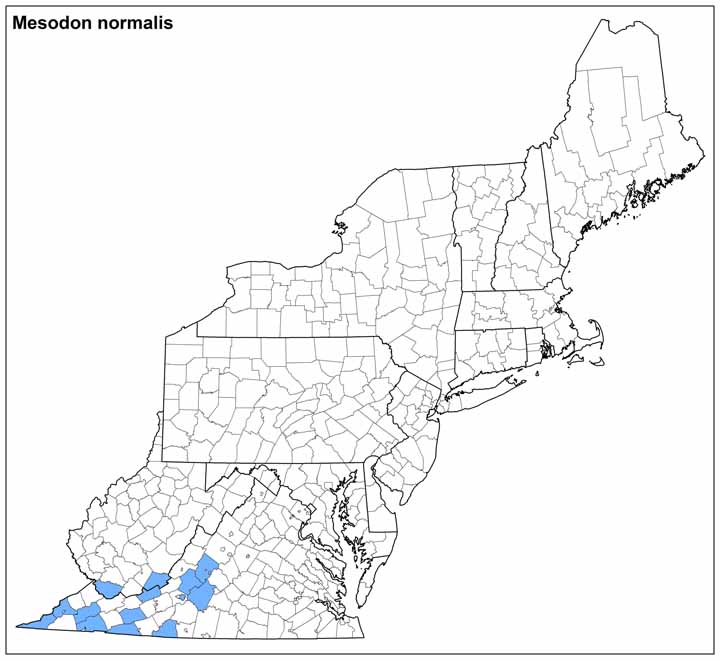Land Snails
.jpg)



Photo(s): Live Mesodon normalis image © Bill Frank, views of a shell © Dan Dourson.
Click photo(s) to enlarge.
Mesodon normalis (Pilsbry, 1900)
Family: Polygyridae
Common name: Grand Globe
Identification
Width: 32-34 mm
Height: 24.5-26.5 mm
Whorls: 5+
This animal’s shell is similar to that of Mesodon andrewsae except that it is much larger. Its shell is thin, though not as thin as that of M. andrewsae. The reflected lip is broad and flat, and the shell is often yellow-ish on the back side of the lip. A single wide, bump-like tooth can frequently be found on the columellar margin of the aperture. The animal is dark-colored.
Ecology
Mesodon normalis is typically found on soils that are not rich. It lives in ravines and on mountainsides, and can be found at altitudes of up to 5,000’ (Hubricht 1985). At two sites in North Carolina these animals were found to live at densities of 4 to 18/m2, estimated from capture-recapture data (Foster and Stiven, 1994).
In a laboratory experiment with North Carolina animals, this species demonstrated age-dependent reproductive output, with older snails producing more clutches with fewer eggs, and younger snails producing fewer, larger clutches (Foster and Stiven, 1994). “Young” snails were those with intact periostraca (the shell's protein coat), and “old” snails had pitted and flaked periostraca. Clutch sizes for 23 snails ranged from one to 101 eggs.
Taxonomy
There remains some taxonomic uncertainty about the distinction between M. andrewsae and the more widespread southeastern species M. normalis (Pilsbry, 1900; previously M. andrewsae normalis). Mesodon normalis has also been known as: Helix albolabris var. maxima, Mesodon andrewsae normalis, M. andrewsi, Polygyra andrewsae normalis, and P. normalis.
Distribution
Mesodon normalis can be found in the southern Appalachian Mountains from Virginia to Alabama. In Virginia it is found in the western counties only.
Conservation
NatureServe Global Rank: G5, Secure
NatureServe State Rank: Virginia, S4, Apparently Secure
Meegan Winslow, Ken Hotopp 9/2012
Range Map (click to enlarge)


